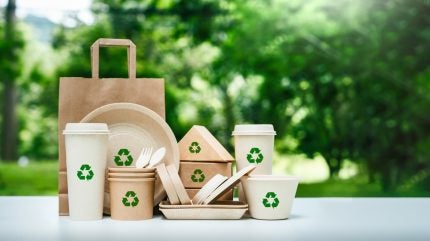
As sustainability becomes a non-negotiable priority for brands and consumers alike, material-neutral packaging is emerging as a compelling solution reshaping packaging design.
Unlike traditional strategies that favour a single material type, material-neutral approaches embrace flexibility—choosing the best material based on performance, sustainability, and economic factors rather than loyalty to one substrate.

Discover B2B Marketing That Performs
Combine business intelligence and editorial excellence to reach engaged professionals across 36 leading media platforms.
This evolution supports circular economy goals, improves supply chain resilience, and empowers brands to reduce environmental footprints while meeting shifting consumer expectations.
Understanding material-neutral packaging and its appeal
Material-neutral packaging refers to designing packaging solutions without a predetermined commitment to a specific material—whether plastic, paper, metal, glass, or compostables.
Instead, it prioritises function, recyclability, carbon footprint, and regional infrastructure to select the most sustainable and practical material for a given application.
The growing appeal of material-neutral strategies lies in their ability to adapt to regional recycling systems and local material availability. For example, a brand operating in both the UK and Southeast Asia may choose paper-based packaging where recycling rates for paper are high, and recyclable plastics or reusable materials where infrastructure supports them better.

US Tariffs are shifting - will you react or anticipate?
Don’t let policy changes catch you off guard. Stay proactive with real-time data and expert analysis.
By GlobalDataThis tailored approach enables brands to optimise packaging sustainability while avoiding a one-size-fits-all mindset that can undermine true circularity.
Keywords like material-neutral packaging, sustainable packaging, and eco-friendly packaging continue to trend in search data, highlighting rising consumer curiosity and industry momentum.
At its core, material neutrality challenges the outdated notion that a single “sustainable material” exists, instead offering a more dynamic, data-driven approach aligned with the complexities of modern supply chains and waste management systems.
Material neutrality and circular economy goals
The shift towards material-neutral packaging strategies is closely linked to the packaging industry’s broader commitment to circular economy principles.
Circularity requires not only designing for recyclability but ensuring the chosen material actually gets recycled or reused within existing systems. Material-neutral design enables brands to respond to local collection and recycling realities, thus improving end-of-life outcomes for packaging.
For instance, while PET plastic might be highly recyclable in some European countries, its recycling rates in certain regions remain low due to lacking infrastructure. Material-neutral thinking allows brands to swap materials in these areas—choosing substrates with better recovery rates without compromising product protection.
This flexibility minimises downcycling, reduces landfill waste, and supports circular loops, where packaging materials stay in use longer.
Major packaging suppliers and consumer goods companies are already incorporating material neutrality into their sustainability strategies. By considering life cycle analysis, carbon footprints, and regional recycling capabilities, these companies can select the optimal material on a case-by-case basis.
The Ellen MacArthur Foundation’s advocacy for system-wide circularity also lends weight to material-neutral thinking, urging packaging stakeholders to design for the realities of each market rather than universal assumptions.
Material-neutral design supports supply chain resilience
Material-neutral packaging is not only a sustainability innovation—it also strengthens supply chain resilience. Global supply chain disruptions, fluctuating raw material prices, and regional shortages can jeopardise brands that depend on a single material type.
By adopting a material-neutral mindset, companies can pivot quickly to alternative materials without redesigning entire packaging systems or compromising performance.
For example, during recent supply chain crises affecting paper and board availability, brands with material-neutral strategies successfully switched to recyclable plastics or bio-based alternatives, avoiding costly production delays.
Such agility ensures continuous product availability while still meeting environmental commitments. This resilience is especially valuable in today’s unpredictable economic and geopolitical landscape, where material security has become a pressing concern.
Moreover, material-neutral design supports innovation by encouraging packaging developers to explore new materials, such as marine-based biopolymers, moulded fibre, or advanced mono-material films, that might offer superior environmental profiles or performance benefits.
These choices can be made without sacrificing compatibility with existing filling lines, labelling equipment, or logistical requirements—critical factors for large-scale consumer goods manufacturers.
Future outlook for material-neutral packaging
As regulatory pressure on packaging waste grows—particularly in Europe and North America—brands and converters are expected to increasingly embrace material-neutral strategies.
Extended Producer Responsibility (EPR) schemes, deposit return systems, and shifting consumer preferences for transparent sustainability claims make a flexible, data-informed approach to material selection more relevant than ever.
Looking ahead, successful packaging strategies will likely integrate material-neutral thinking with digital technologies, such as packaging lifecycle data platforms and AI-driven sustainability assessments.
These tools can provide real-time analysis of the most suitable materials for each product and region, factoring in cost, environmental impact, and recyclability.
Material-neutral packaging is not a temporary trend but a transformative shift towards smarter, more adaptable, and regionally appropriate packaging.
By placing sustainability, performance, and practicality on equal footing—rather than defaulting to a single material—brands can future-proof their operations, support global circular economy ambitions, and build trust with increasingly discerning consumers.
For brands and suppliers alike, material neutrality represents an opportunity to step beyond traditional packaging silos and reimagine how products can be protected, transported, and presented in ways that truly align with local realities and global sustainability goals.





